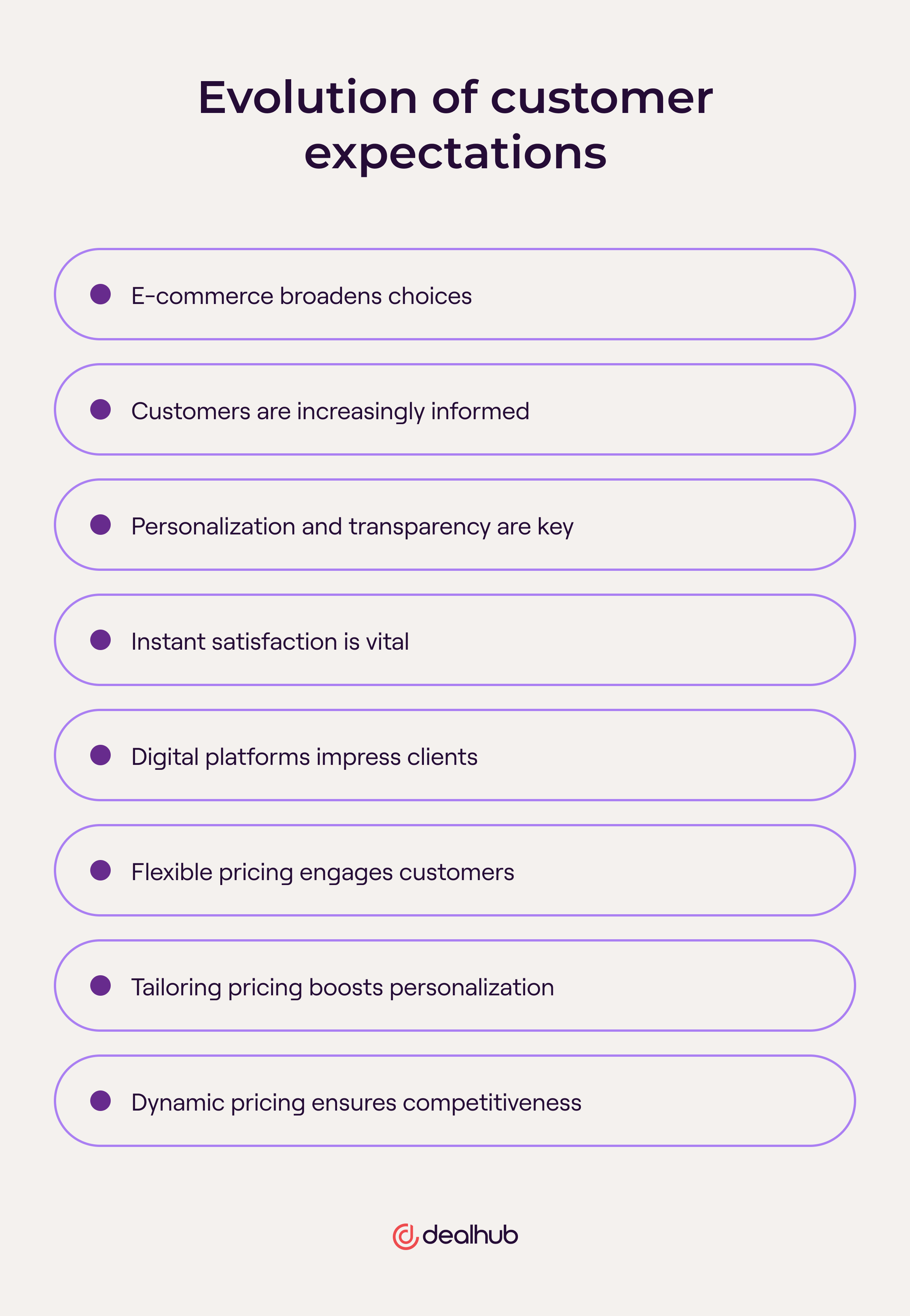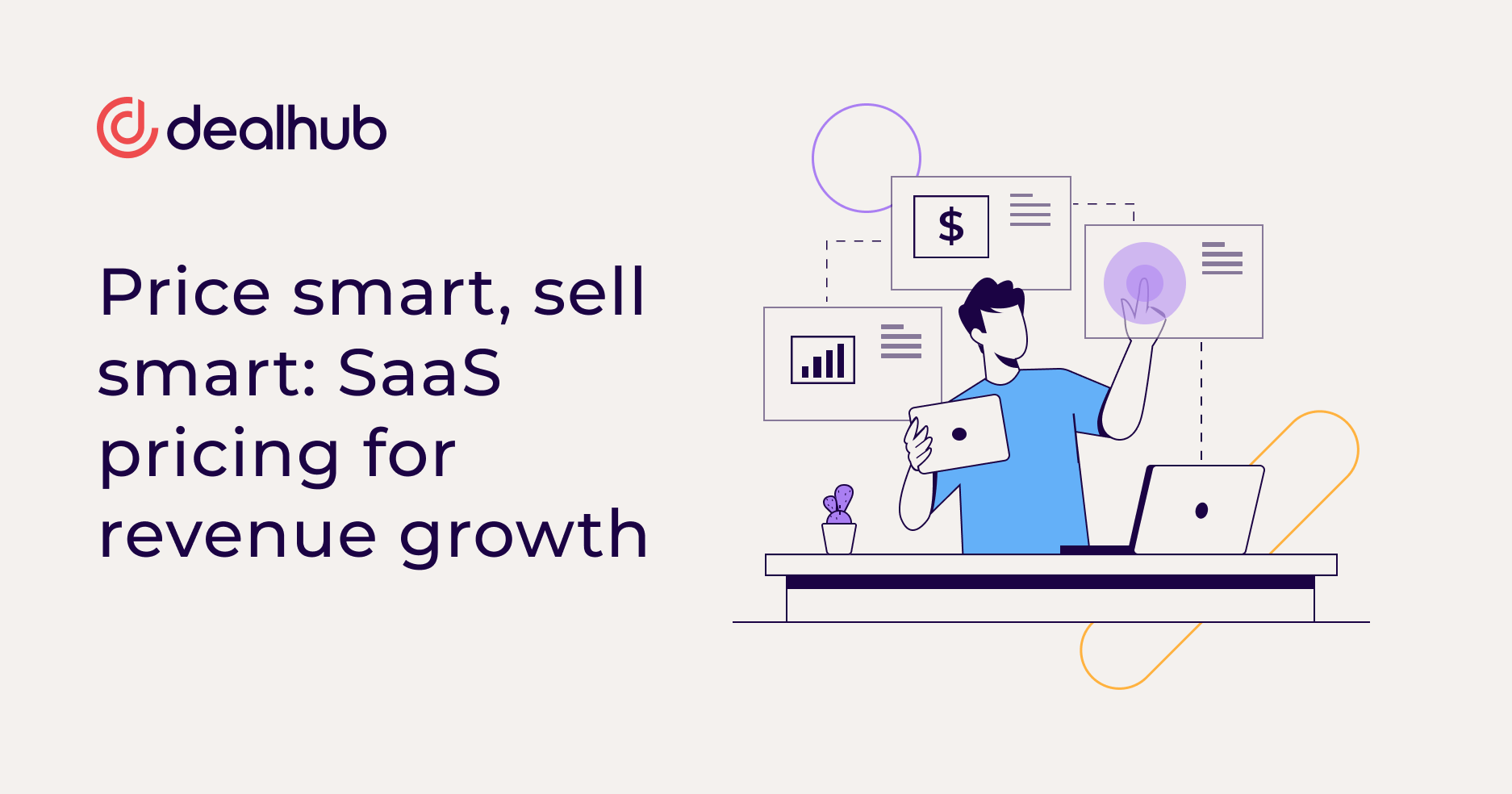Enter dynamic pricing, a game-changing approach that empowers businesses to meet customer demands while optimizing profitability. New to the concept of dynamic pricing? Don’t panic! In this blog, we’ll explore the importance of pricing flexibility, its benefits, and how dynamic pricing accommodates the needs of various types of organizations within the context of the current economy.
Companies are embracing flexible pricing, but why?
At its core, pricing flexibility refers to the ability to adjust prices based on various factors, including:
- seasonality
- market conditions
- inventory/surplus management
- competition
- customer demand
Businesses can maintain a competitive edge and maximize revenue potential by utilizing flexible pricing models that best position products and services based on market conditions.
Our current market reality is more volatile than ever, and companies face unpredictable shifts that can impact their bottom line. Adaptable pricing strategies enable businesses to stay agile and responsive so that they can swiftly adjust prices to align with market fluctuations, ensuring organizations remain competitive and relevant.
Agile pricing has a multitude of knock-on benefits for businesses. For example, it enables companies to capture customer value more accurately, ensuring that prices align with the perceived worth of their products or services. Beyond that, it allows businesses to optimize profitability by identifying opportunities for price differentiation, automated bundling, or promotional offers. This, in turn, can improve customer satisfaction, drive revenue growth, and gain a competitive advantage.
Customer expectations have changed
With the rise of e-commerce giants and online marketplaces, customers can access a broader range of options, making it essential for businesses to differentiate themselves. After all, with unprecedented access to the digital landscape’s purchasing power, customers have more choices, are more knowledgeable, and are becoming ever more discerning, which means vendors must step up their game. Organizations need to nurture personalized experiences, offer transparent pricing, and provide clients with instant gratification to retain clients.

The digital landscape also provides companies with unprecedented opportunities to impress clients. For example, flexible pricing empowers businesses to engage with clients and meet their evolving needs. By tailoring prices to individual customer segments or even individual customers, companies can offer more personalized experiences that resonate with their target audience. It doesn’t stop there; dynamic pricing enables businesses to respond to changing customer preferences and adjust prices accordingly, ensuring they stay competitive in a fast-paced market while meeting a client’s needs on a more personal level.
Flexible pricing isn’t new. Several companies have successfully implemented pricing flexibility to meet customer demands. For instance:
- SaaS products offer flexible plans based on the number of users, storage requirements, or feature levels so that customers can select plans that align with their needs and budgets.
- Some fitness centers and gyms offer flexible pricing models where membership fees may cover specific locations or in-house offerings such as training programs.
- Car rentals offer flexibility in price around aspects such as car size and insurance type.
- Event venues allow customers to choose the price of tickets based on seat location.
Companies struggle with market volatility
Market volatility can wreak havoc on businesses that do not adapt. Rapid changes in supply and demand, economic conditions, or competitive landscapes can render existing pricing strategies ineffective. In such scenarios, when companies fail to adjust their pricing, these market changes lead to an organization losing customers, revenue, and market share.
Businesses must be ready to address market volatility head-on. To do that, they must employ strategies that allow them to adjust pricing in real-time. This involves utilizing market intelligence tools to gather data, monitoring competitors’ pricing strategies, and leveraging predictive analytics to anticipate market trends. By adopting proactive pricing strategies, companies can make data-driven decisions that enable them to stay ahead of the curve. Pricing can’t just be flexible anymore – it must also be dynamic so that companies can react to market conditions and stay agile in an economy that shifts quicker than ever.
A healthy balance between profitability and customer value
A healthy balance between profitability and customer value is crucial for sustainable business growth. While profitability is essential, it cannot come at the expense of customer satisfaction. Agile pricing models allow companies to align prices with the perceived value customers place on their products or services. Making pricing flexible and dynamic ensures companies balance growth and client satisfaction while responding to current market conditions.
Dynamic pricing leverages flexibility and empowers businesses to optimize profitability by identifying opportunities to capture additional value. This can involve offering premium versions of products or services at a higher price point or bundling complementary offerings to drive upsells. Companies can maximize revenue potential without compromising customer loyalty by intelligently offering various types of agile pricing initiatives.
Achieving a balance between profitability and customer value requires an extensive understanding of current market dynamics and customer preferences. To get it right, businesses must continuously monitor and analyze data, solicit customer feedback, and iterate their pricing strategies accordingly. When fostering a customer-centric approach to pricing and iterating according to shifting customer sentiment and market demands, companies can build lasting relationships while driving repeat business, maintaining profitability, and fueling sustainable growth.
Remaining flexible – adopting agile pricing models
Various pricing models offer different degrees of flexibility. For example, value-based pricing allows businesses to adjust prices based on customers’ perceived value. In contrast, subscription pricing offers recurring revenue opportunities and can be easily adjusted to accommodate for any changing market dynamics. Companies can identify the most suitable approach for their business and industry by exploring different pricing models.
When selecting a pricing model, businesses must consider multiple factors, including:
- industry norms
- customer behaviors
- the competitive landscape
Additionally, businesses should evaluate their internal capabilities and infrastructure to ensure they can effectively implement and manage the chosen pricing model. Each company is unique. Finding the right fit requires thoughtful analysis and consideration.
Companies across various industries have successfully embraced dynamic pricing models. For example:
- Airlines across the industry dynamically adjust ticket prices based on factors like demand, seat availability, and time of purchase.
- E-commerce platforms utilize dynamic pricing to offer personalized recommendations and time-sensitive deals, enhancing the shopping experience for customers.
- Hotels and vacation rentals dynamically set rates according to seasonality, local events, and occupation rates.
- Ride-sharing apps like Lyft and Uber implement surge pricing to balance supply and demand.
These examples demonstrate how dynamic pricing models can enable businesses to optimize revenue and deliver customer value.
Finding the right fit – implementing dynamic pricing technology
Implementing dynamic pricing requires robust technology solutions. Pricing management software and tools enable businesses to:
- collect and analyze sizable amounts of data
- identify pricing patterns
- automate pricing adjustments in real-time
These tools provide valuable, timely insights that empower businesses to make informed pricing decisions and achieve optimal results.
Technology advancements have revolutionized the way businesses approach pricing. With the power of data analytics, artificial intelligence, and machine learning algorithms, companies can:
- accurately forecast demand
- assess price elasticity
- identify pricing opportunities
Technology enables businesses to respond swiftly to market changes, maintain competitiveness, and deliver customer value.
While adding pricing solutions will enhance a company’s bottom line, the endeavor must not be taken lightly. Implementing pricing technology solutions requires careful planning and consideration. At the outset, businesses must ensure they have the necessary infrastructure, expertise, and resources to leverage these tools effectively. Collaborating with pricing experts and undergoing proper training can ensure companies unlock the full potential of pricing technology solutions.
Embracing the power of pricing flexibility
Nurturing an agile pricing model has become a business imperative in an economy characterized by rapid disruptions and evolving customer expectations. Companies that embrace dynamic pricing are better positioned to navigate market uncertainties, meet customer demands, and drive long-term growth.
To effectively embrace dynamic pricing, businesses should prioritize the following:
- Agility. Companies open to change can adapt pricing strategies swiftly in response to market dynamics.
- Customer needs. Continuously monitoring customer preferences, leveraging analytics, and delivering personalized pricing experiences will ensure customer satisfaction.
- Technology. Investments in pricing management software and tools to streamline processes, gather insights, and make data-driven decisions ensure organizations stay ahead of the competition while lowering costs.
- Continuous optimization. Regularly evaluating and refining pricing strategies based on market feedback and performance metrics.
- A balance of priorities. Finding the equilibrium between profitability and customer value will drive sustainable growth.
Remember: an agile pricing model is a powerful tool that ensures businesses can navigate a fast-paced and volatile economy without being caught off guard by evolving pricing expectations. Companies enhance their competitive advantage, maximize profits, and exceed customer expectations by adopting dynamic pricing models, leveraging technology, and embracing customer-centric strategies. Don’t wait for change; take charge, adapt, and unleash the power of pricing flexibility to drive your business forward.




